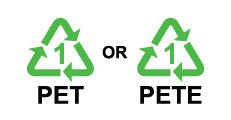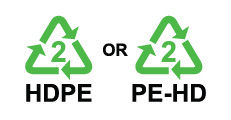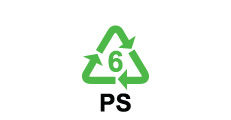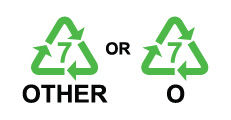What are the mainstream plastics? So what are the edible plastic sheets?
The plastic recycling symbol is a triangular symbol, usually at the bottom of the plastic container. There are numbers from 1 to 7 inside the triangle. Each number represents a different material. Therefore, the different numbers in the recycling mark indicate which resin the product is made of. If the product is made of several different materials, What is marked is the main material of the product.

01.PET (polyethylene terephthalate)

This material is heat-resistant up to 70°C and is only suitable for warm or frozen drinks. It is easy to deform when it is filled with high-temperature liquid or heated, and substances harmful to the human body can be dissolved. In addition, scientists have discovered that after 10 months of use, this plastic product may release carcinogens that are toxic to the human body. Therefore, throw away the beverage bottle when it is used up, and don’t use it as a water cup or as a storage container to hold other items, so as not to cause health problems.
02.HDPE (High Density Polyethylene)

PE is the most widely used plastic in industry and daily life, and it is generally divided into two types: high-density polyethylene (HDPE) and low-density polyethylene (LDPE). PE has excellent resistance to acidity and alkalinity. Compared with LDPE, HDPE has a higher melting point, greater hardness, and is more resistant to corrosion by corrosive liquids.
03.PVC (Polyvinyl Chloride)

The toxic substances that this kind of plastic products easily produce come from two aspects, one is the monomolecular vinyl chloride that is not fully polymerized during the production process, and the other is the harmful substances in the plasticizer. These two substances are easy to separate out when encountering high temperature and grease. After the toxic substances enter the human body with food, they are easy to cause cancer. At present, containers of this material have been less used for packaging food. If it is in use, do not let it heat up.
04.LDPE (low density polyethylene)

This material is often used to make plastic wrap. Its heat resistance is not strong. Generally, qualified PE cling film will melt when the temperature exceeds 110°C, leaving some plastic preparations that cannot be decomposed by the human body. In addition, when food is wrapped with plastic wrap and heated, the fat in the food can easily dissolve harmful substances in the plastic wrap. Therefore, before the food enters the microwave oven, first remove the wrapped plastic wrap.
05.PP (polypropylene)

The container made of this material can withstand a high temperature of 130°C, but its transparency is poor. This is the only plastic box that can be placed in a microwave oven and can be reused after careful cleaning. It is important to note that some microwave lunch boxes, the box body is made of No. 05 PP, but the lid is made of No. 06 PS (polystyrene), PS has good transparency, but is not resistant to high temperatures, so it cannot be the same as the box body. And put it in the microwave. To be safe, remove the lid of the container before putting it in the microwave.
06.PS (polystyrene)

This material is heat-resistant and cold-resistant, but it cannot be placed in a microwave oven to avoid the release of chemicals due to excessive temperature. And can not be used to contain strong acids and strong alkaline substances, because it will decompose polystyrene which is not good for the human body.
07.PC and other materials

PC is a material that is widely used, especially for the manufacture of baby bottles, space cups, etc., because it contains bisphenol A and is controversial. Experts pointed out that in theory, as long as 100% of the bisphenol A is converted into a plastic structure in the process of making PC, it means that the product is completely free of bisphenol A. However, if a small amount of bisphenol A is not converted into the plastic structure of PC, it may be released into food or drink. Therefore, pay special attention when using this plastic container. The residual bisphenol A in PC, the higher the temperature, the more release and the faster the speed. Therefore, the PC water bottle should not be used to hold hot water.
